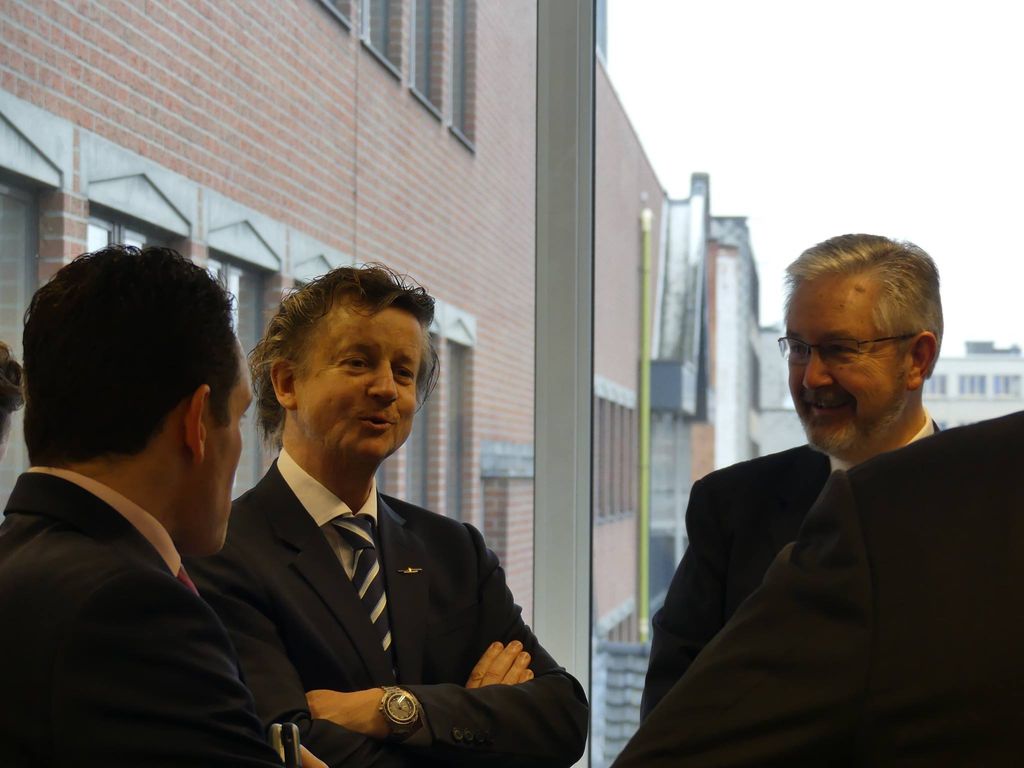
DiPP - Space technology, the final frontier of a connected Europe
Space is an integral part of the Digital Society, serving citizens, companies and governments in pursuit of their daily life or of loftier business, strategic and emergency objectives. Satellites are as inconspicuous as they are ubiquitous: they support video distribution, services to mobile communities or high capacity backhaul around the world.
The European Commission’s Communication “Space Strategy for Europe” released in 2016 aims to ensure the integration of space into society and the economy and to foster a globally competitive and innovative space sector.
With satellites, connection anytime, anywhere, on any device takes on an even more compelling meaning.
Speakers
-
Lucas Buthion
Head of Eurospace office in Brussels
-
Florian Damas
Policy & Regulatory Affairs Director, Government Relations, Nokia
-
Daniel Friedlaender
Head of the Brussels office, Sky
-
Hermann Ludwig Moeller
Head of Institutional & European Programmes, ESA
-
Gerry Oberst
Senior Vice President, Global Regulatory Affairs & Government Strategy, SES
-
Daniel Quintart
Space Data for Societal Challenges and Growth, DG GROW, European Commission
Moderator
-
John Higgins
Director General at DIGITALEUROPE
Europe’s fast growing needs for connectivity provide space technology, if not with a final frontier, at least with a wealth of new horizons. It falls on policy makers to help their industry to take advantage of these developments and thus keep its global lead.
Satellite communication markets are limited by nature (only 22 satellites were launched in 2014, for instance) and by new, often State-supported competition from Russia, China, Japan, India. For historic reasons, the EU domestic leverage is poor compared to that of the US: government is behind 15% vs 50% of these industries respectively.
Three factors will shape the future:
- the digital divide, in dire need to be bridged: access is not evenly distributed across geography and social classes;
- the uptake of 5G, where the Commission, rightly keen to promote technology neutrality, sees a major role for satellite. A combination of satellite and terrestrial link works wonders indeed in remote areas. Thales’ Stratobus, Google, Facebook are involved in research and experiments on high altitude balloons or ‘High-altitude pseudo-satellites’.
- the IoT expansion in its never-ending quest for cost-effective solutions, also for top mission-critical features in network services.
Incidentally, space connectivity includes sovereignty concerns on top of its sheer market dimension, if only because a healthy space industry is so obviously in the public interest and because spectrum is still a nation’s key asset.
Spectrum is indeed the raw material of choice for satellite communication, the bedrock of space technology. As a telling example, SES’ 65 satellites cover 95% of the world. A sustainable use of radio frequencies is instrumental to the future of space technology, and the ITU plays a critical part in this respect via its World Radio Conferences. PPPs got praised as the most effective approach to experimenting leading-edge technology.
Another key requirement on the part of the space industry is a stable and predictable regulatory environment to match the 15-year average lifetime of a satellite. It is worth noting though that more and more satellite equipment is software-defined so that you can tweak a few things while it’s up in the air.
Video is definitely driving data traffic around the world. UHD pushes further the envelope towards bandwidth-hungry services. While the jury is still out on the technical merits of point to multipoint vs point to point distribution of entertainment, users are voting with their wallet, so to speak: they look increasingly locked to content online, watched on screens of a variety of sizes. Content distributors, whether by way of traditional broadcasting or non-linear offerings, find it hard occasionally to deal with incumbent operators which seem keener to stick to old practices than to develop a culture of innovation.
Satellite is also instrumental to mobility at sea, in the air and growingly on land with the uptake of connected vehicles.
Copernicus, a programme dedicated to Earth observation, exemplifies the role of the Commission not as a regulator but as a catalyst of technology. It also helps grasp a key aspect of the merits of connectivity in data-driven economies. Indeed, collecting data is just the beginning, however complex mapping the Earth might look. Copernicus value-added doesn’t stop at the ground station. Smart processing is the next challenge: Copernicus has to optimize the experience of the various users of a said big data pool. It might be seen as cross-fertilization between data flows concerning crop optimization, sustainable marine life, climate monitoring, disaster-generated emergencies, civil security. Weather-linked predictive analysis is not always afforded the luxury of time, as evidenced in evaluating where lightning will hit next.
With continuing vigilance and regulatory fine-tuning, the EU seems to have all that it takes to keep its global leadership throughout the value chain of space technology in the best interest of a continent tightly connected to the rest of the world.








